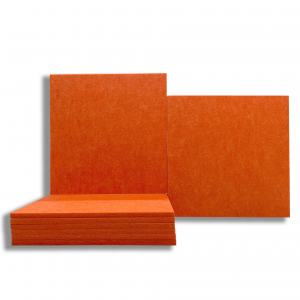
Soundproofing isn’t just a luxury — it’s a necessity for many. If you’re a homeowner seeking peace, a musician needing perfect acoustics, or a content creator wanting crisp, clear audio, soundproofing your space can significantly improve your environment. One of the most popular materials for this purpose is acoustic foam.
The Importance of Soundproofing
Soundproofing is crucial in creating comfortable living spaces, professional studios, and productive work environments. It ensures peace in homes, shielding you from external noise and keeping your activities private.
For musicians and content creators, soundproofing materials are vital for achieving high-quality recordings by reducing echoes, reverberations, and unwanted background noise. Understanding the importance of soundproofing is the first step to appreciating the benefits of acoustic foam.
What is Acoustic Foam?
Acoustic foam, often seen as those pyramid or wedge-shaped panels adorning studio walls, is a specially designed material that helps control sound waves. It works primarily by absorbing sound, which minimises echo and reverberation within a room.
Made from open-cell polyurethane foam, it’s designed to capture and convert sound energy into heat energy, thereby reducing the intensity of sound waves.
Why Use Acoustic Foam? The Benefits
Here are the main benefits of using acoustic foam as a soundproofing material:
- Improved Sound Quality: Reducing echoes and reverberations, acoustic foam ensures clearer and more distinct sound, which is crucial for music recordings, podcasts, and video content.
- Easy Installation: Unlike many other soundproofing materials, acoustic foam is lightweight, easy to handle, and can be installed without professional help.
- Cost-Effective: Acoustic foam is relatively affordable compared to other soundproofing solutions, making it accessible for both personal and professional use.
- Versatility: Available in various shapes, sizes, and colours, acoustic foam can be tailored to fit different aesthetic preferences and functional needs.
- Enhanced Privacy: Dampening sound helps keep conversations and activities contained within a room, providing an additional layer of privacy.
How to Install Acoustic Foam: A Step-by-Step Guide
The process of installing acoustic foam is straightforward. Here’s a simple guide to help you get started:
- Determine the Coverage Area: Measure the walls, ceiling, or other surfaces you plan to cover with acoustic foam.
- Clean the Surface: Ensure the surface is clean and free of dust or debris to help the foam adhere better.
- Choose Your Adhesive: Use adhesive spray, double-sided tape, or mounting squares designed for acoustic foam installation.
- Plan Your Layout: Arrange the foam panels on the floor first to map out your desired pattern before attaching them to the wall.
- Attach the Panels: Starting from one corner, apply the adhesive to the back of each panel and press it firmly onto the wall. Hold it in place for a few seconds to ensure a strong bond.
- Cover Key Areas: Focus on areas that reflect the most sound, like directly behind speakers or around your recording area, for maximum effectiveness.
Acoustic Foam Myths Debunked
Let’s address some common misconceptions about acoustic foam:
-
Myth: Acoustic Foam Completely Soundproofs a Room:
Acoustic foam primarily reduces echo and reverberation but does not block sound from entering or exiting a room. For complete soundproofing, other materials like mass-loaded vinyl or acoustic panels are required.
-
Myth: All Acoustic Foam is the Same:
Quality and effectiveness can vary significantly between different brands and types of acoustic foam. It’s essential to choose reputable soundproofing products designed for your specific needs.
-
Myth: Acoustic Foam is Only for Studios:
While it’s popular in music studios, acoustic foam is versatile and can be used in any setting where sound quality is important, including home theatres, offices, and gaming rooms.
Conclusion
Acoustic foam is an effective solution for improving sound quality in various environments. Understanding its benefits and proper installation techniques, you can enhance your space, whether you’re a homeowner, musician, or content creator. Remember, soundproofing is not just about reducing noise — it’s about creating the perfect acoustics for your needs.
Feel free to share this guide with anyone who might find it helpful, and let’s continue to foster environments where sound truly matters!
